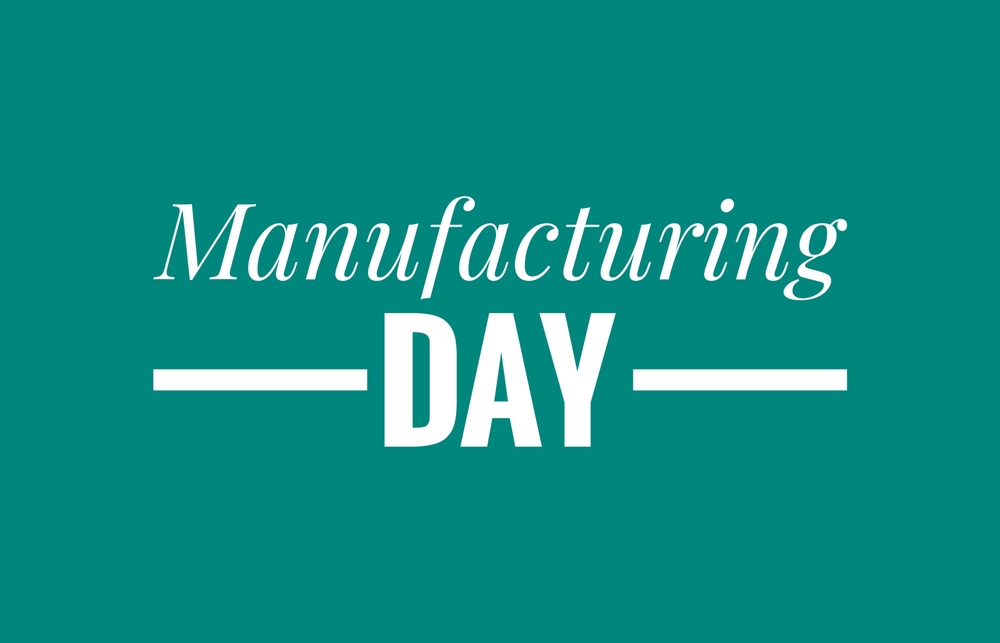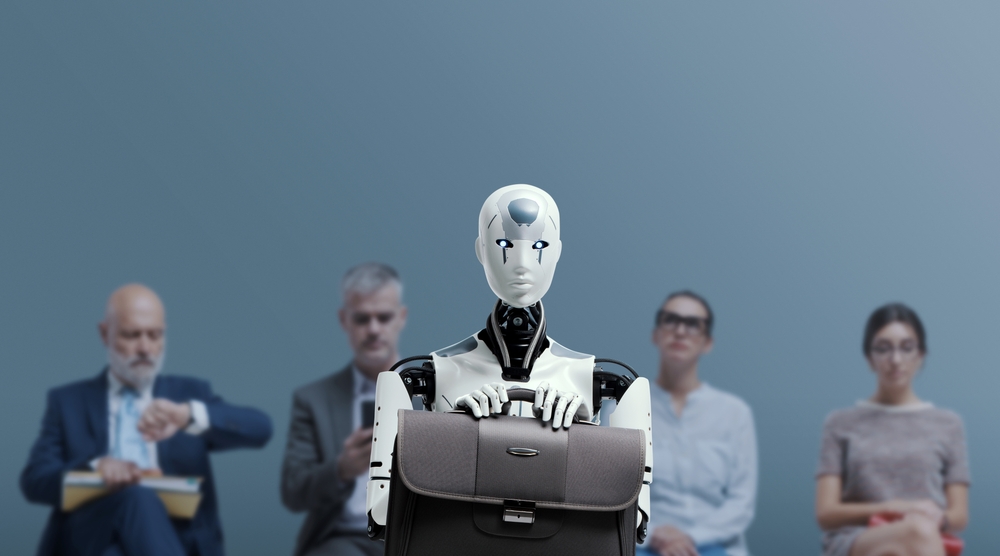By Stephen DeAngelis
Tomorrow is MFG Day. Few topics have received higher priority from the current U.S. administration than growing America’s manufacturing sector. In order to grow the manufacturing sector, you also need to ensure skilled workers are available to fill job openings. The Manufacturing Institute, sponsor of Manufacturing Day, has promoted manufacturing and the need for a skilled workforce for over a dozen years. The first official Manufacturing Day was declared in New Jersey in 2012 by Governor Chris Cristie. Two years later, President Barack Obama signed a Presidential Proclamation recognizing the day.
The Manufacturing Institute explains, “Held annually on the first Friday in October with events that continue throughout the month, MFG Day — Manufacturing Day — helps show the reality and future of modern manufacturing careers by encouraging thousands of companies and educational institutions around the nation to open their doors to students, parents, educators and community leaders. As manufacturers seek to fill 3.8 million high-skill, high-tech and high-paying jobs over the next decade, MFG Day empowers manufacturers to come together to address their collective challenges and build excitement about manufacturing careers so they can help their communities and future generations thrive.”[1] The National Association of Manufacturers (NAM) believes even more jobs will need to be filled over the next decade. They predict the number will be 4.6 million high-skill, high-tech and high-paying jobs.[2] The following video provides a brief background of MFG Day goals.
Video https://youtu.be/Wnu7k0F9u90
Freelance writer Iris Leung writes, “Manufacturing Day is a reminder that behind every product, supply chain, and technological breakthrough is a team of skilled pros making it all happen. These aren’t just people running machines — they’re solving problems, building smarter systems, and keeping entire industries in motion. And yet, their work often flies under the radar. Beyond just a well-earned pat on the back, this day is a chance to spotlight the impact these teams make daily, and to show the next generation that modern manufacturing is anything but outdated. It’s high-tech, hands-on, and packed with incredibly diverse career paths.”[3]
It would be difficult to understate the importance of manufacturing and its contribution to the U.S. economy, national security, and innovation, creating good-paying jobs, strengthening supply chain resilience, and driving technological advancements. The manufacturing sector provides a large portion of the U.S. GDP, generates significant tax revenue, and serves as a bedrock for innovation and skilled work, though challenges exist in maintaining global competitiveness and fully realizing its economic potential. Manufacturing Day highlights both the benefits and the gaps in America’s manufacturing sector.
“Manufacturing powers the economy,” Leung explains, “we’re talking trillions in output, millions of jobs, and an industry that touches nearly every part of daily life. For all its impact, manufacturing still gets hit with outdated assumptions: low pay or limited career growth. Here’s the truth: modern manufacturing combines cutting-edge automation, AI-driven processes, and a strong push towards sustainability. The work is challenging and future-focused, with competitive salaries and career paths for every skill set. That’s why Manufacturing Day matters.” Let’s dig a little deeper.
Economic impact
• Manufacturing provides a massive economic multiplier: Manufacturing creates a powerful ripple effect across the economy. The total multiplier effect for manufacturing is estimated to be $3.60 for every $1.00 of value-added output.[4]
• Job creation: The manufacturing sector directly employs nearly 13 million Americans, offering stable, high-paying, and innovative career opportunities. And it has been estimated that one manufacturing employee generates another 3.4 workers elsewhere.[5] The average manufacturing employee earns more than $102,000 annually in pay and benefits.[6]
• Driving innovation: U.S. manufacturing is a major source of innovation and research and development (R&D). “The largest proportion of the $691.5 billion in R&D performed by businesses with 10 or more domestic employees in 2022 was conducted by the manufacturing sector (54%). Four-fifths of the $691.5 billion was performed by five industries: information (including software publishing) at 26%; chemicals manufacturing (including pharmaceuticals and medicines) at 18%; computer and electronic products manufacturing (including semiconductors) at 15%; professional, scientific, and technical services (including R&D services) at 11%; and transportation equipment manufacturing (such as motor vehicles, including electric vehicles and aerospace products and parts) at 10%. Machinery manufacturing (which includes semiconductor machinery) performed another 3%.”[7]
• Export growth: “In 2024, manufacturers in the United States exported $1,638.11 billion, with durable goods exports hitting an all-time high, at $1,039.51 billion. Nondurable goods exports rose slightly in 2024, growing to $598.60 billion from $589.72 billion in 2023.”[8]
Concluding Thoughts
Despite its importance, American manufacturing faces several challenges. One of the greatest challenges, of course, is global competition. Competing with lower-cost labor markets and navigating complex global trade dynamics is a constant and ongoing challenge. Demographics is another challenge. An aging workforce and a persistent skills gap create ongoing difficulties in recruiting and retaining qualified personnel. And, like everyone else, manufacturers must manage rising costs for energy, raw materials, and transportation while staying competitive. In response, many U.S. manufacturers are focusing on automation, embracing sustainable practices, and prioritizing supply chain resilience through nearshoring and reshoring efforts.
Another challenge is the misconception that all manufacturing jobs involve dirty work. Laurie Harbour and Scott Walton, partners at Wipfli LLP, blame manufacturers for failing to address this perception. They explain, “Modern manufacturing involves sophisticated processes, clean environments, and opportunities to work with cutting-edge technologies. Despite this progress, public perception has not caught up fast enough to address the talent gap. A Deloitte study estimates that over two million manufacturing jobs could go unfilled by 2030 due to a lack of skilled workers. To secure the future of U.S. manufacturing, industry leaders must take deliberate steps to reshape its image and strengthen its foundation.”[9] Manufacturing Day aims to do just that.
Footnotes
[1] Staff, “MFG Day is October 3, 2025,” The Manufacturing Institute.
[2] Staff, “Rally with Manufacturers,” National Association of Manufacturers.
[3] Iris Leung, “Manufacturing Day: Celebrating the backbone of industry,” Achievers, 23 May 2025.
[4] Staff, “Top 18 Facts You Need to Know About U.S. Manufacturing,” xTuple.
[5] Ibid.
[6] Katie Rapp, “Manufacturing in America – Contributing to Our Economy, Employment, and Innovation,” National Institute of Standards and Technology, 4 March 2025.
[7] Staff, “U.S. Business R&D,” National Science Foundation.
[8] Staff, “Facts About Manufacturing,” National Association of Manufacturers.
[9] Laurie Harbour and Scott Walton, “The Importance of Manufacturing to the U.S. Economy,” Forbes, 16 January 2025.








